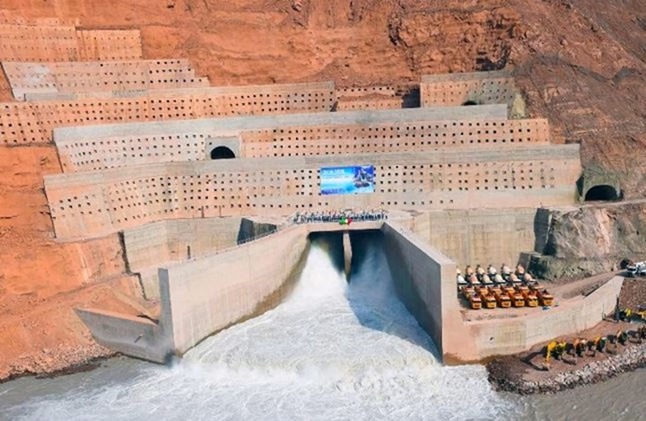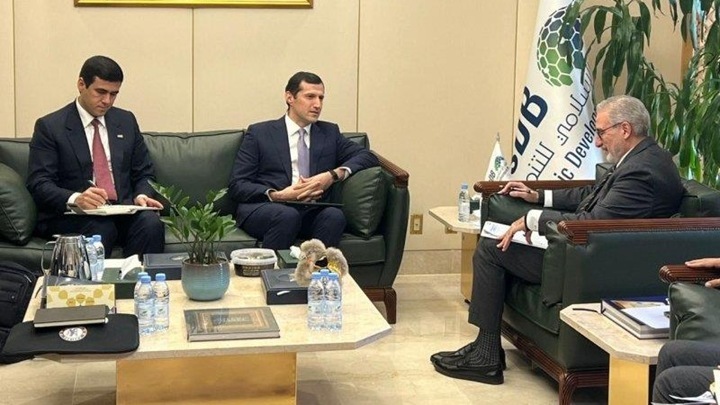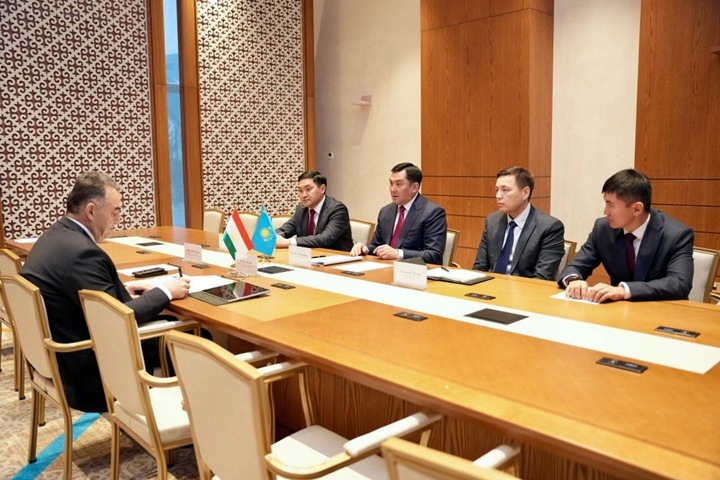The head of the State Committee on Investment and State-owned Property Management (GosKomInvest), Sulton Rahimzoda, has named government’s partners for development, which are interested in financing the completion of the construction of the Roghun hydropower plant.

In a report released at a news conference that took place in Dushanbe on February 14, he named the World Bank, the Asian Development Bank, the Asian Infrastructure Investment Bank, the OPEC Fund for International Development, and the Saudi Fund for Development as potential foreign investors for the completion of the construction of the Roghun hydropower plant.
He further noted that the government last year signed appropriate agreements on financing the completion of the construction of the Roghun hydropower plant with the World Bank and the Saudi Fund for Development.
Recall, the World Bank’s Board of Executive Directors on January 12, 2023 approved US$15 million in grant financing from the International Development Association for the Technical Assistance for Financing Framework for Roghun Hydroelectric Power Project (HPP).
Tajikistan and Saudi Arabia signed an agreement on financing the completion of the construction of the Roghun hydropower plant in Dushanbe on December 4 last year. A loan agreement for 100 million US dollars was signed by Faiziddin Qahhorzoda, Minister of Finance, and Sultan Abdurahman Al-Marshad, Chief Executive Officer (CEO) of the Saudi Fund for Development (SFD).
This loan is allocated for co-financing the construction of the Roghun hydropower plant’s facilities to provide the renewable energy, increase generation of “green” energy and promotion the “green” economy in Tajikistan.
“Negotiations with other partners are still underway and their results will become available during this year,” Rahimzoda said.
The Roghun HPP is one of the largest projects in the region that can become an important factor of development of Tajikistan and the Central Asian region as a whole. It will contribute significantly to the country’s sustainable development by efficiently utilizing natural resources, including “green” energy.
To complete the construction of the Roghun hydropower plant, Tajikistan founded OJSC NBO Roghun in April 2008 after it formally revoked a contract with Russia’s RusAl aluminum company in August 2007. To raise funds to complete construction of the Roghun HPP the government started to sell shares in Roghun to people on January 6, 2010. Tajikistan has reportedly issued 6 billion somonis worth of 5 million Roghun shares.
In 2016, construction duties on Roghun were assigned to Italian company Salini Impregilo (currently Webuild).
The project is broken down into four components, with the most expensive one involving the building of a 335-meter-high clay core rockfill dam — the tallest in the world — which will entail costs of around US$1.95 billion. Construction of the Roghun hydropower plant is expected to be completed in 2033.
Two of the six turbines have already started producing energy for sale to raise funding to complete it. The first turbine went into service in November 2018 and the second one was introduced into operation in September 2019.
In his address to a joint meeting of both chambers of parliament, President Emomali Rahmon said on December 28, 2023 that the next unit of the Roghun hydropower plant is planned to be introduced into operation in 2025.
He noted that currently 15,000 workers and specialists are working at the site for construction of the Roghun hydropower plant. At the same time, Rahmon emphasized that there are 5,000 workers missing.
“For the timely implementation of the project, 20,000 workers are currently needed,” Rahmon said, noting that 5 billion somonis (equivalent to US$456 million) were channeled to the Roghun project in 2023.
To-date, spending on the construction of the Roghun hydropower plants has reportedly exceeded 40 billion somonis since 2008.
The hydropower plant is expected to have six turbines with combined capacity of 3600 MW. When complete, it is expected to produce 17.1 terawatt-hour (TWh) of electrical work per year.
If built as planned, the Roghun hydropower plant is expected to end chronic power shortages in Tajikistan and allow it to export electricity to neighboring countries.






Leave a Reply